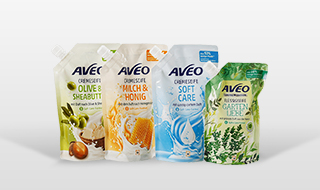 Tel: +86 188 2689 9458
Tel: +86 188 2689 9458
 Tel: +86 188 2689 9458
Tel: +86 188 2689 9458
source:other news release time:2022-09-24 Hits:

Packaging bags of different materials have different uses, but few people can tell them apart, so let's take a look at several materials of packaging bags and their main uses.
1. Aluminum foil material
The packaging bag made of aluminum foil has strong air barrier performance, high temperature resistance (121 ° C), low temperature resistance (-50 ° C), and oil resistance. The use of aluminum foil bags is different from ordinary packaging bags, mainly used for high temperature cooking and preservation of low temperature food. However, the aluminum foil packaging bag has no heat sealability due to its fragile material, easy to break, and poor acid resistance. Therefore, it is generally only used as the middle material of the bag. For example, the milk packaging bags and quick-frozen food packaging bags that we drink in our lives will use aluminum foil.
2. PET material
PET is also known as biaxially oriented polyester film. The packaging bag of this material has good transparency, strong luster, and strength and toughness are better than other materials. It is not easy to break, and is non-toxic and tasteless. in food packaging. Therefore, in daily life, PET is a non-toxic and sterile packaging material for all kinds of food, medicine, and sterilization. However, its shortcomings are also obvious, that is, it is not heat-resistant and alkali-resistant, and cannot be soaked in hot water.
3. Nylon
Nylon is also called polyamide. This material is also very transparent, heat-resistant, oil-resistant, puncture-resistant, and soft to the touch, but it is not resistant to moisture and has poor heat-sealability. Therefore, nylon packaging bags are mostly used to package solid foods, as well as some meat products and cooked foods, such as chicken, duck, spare ribs, etc., which can extend the shelf life of food.
4. OPP material
OPP is also called oriented polypropylene. It is the most transparent and the most brittle among the packaging bag materials, and the tensile force is also very small. Most of the transparent packaging bags used in our lives are made of opp materials, which are widely used in clothing, food, printing, cosmetics, printing, paper and other industries.
5. HDPE material
The full name of HDPE is high-density polyethylene. The bags made of this material are also called PO bags. They can be used in a wide range of temperatures. They can not only be used for frozen food packaging, but also used in packaging bags that are resistant to boiling at 100 degrees Celsius. In daily life, it is mostly used for food packaging, grocery shopping bags, and can also be made into composite films for impermeability and thermal insulation packaging films of food.
6. CPP: The transparency of this material is very good, and the hardness is higher than that of PE film. And it has many types and a wide range of uses, which can be used for food packaging, candy packaging, medicine packaging, etc. It can also be used as the base film of composite materials, and can be made into composite bags together with other films, such as hot filling, retort bags, aseptic packaging, etc.
Seven, PVC plastic bags
Made of polyvinyl chloride, it has good water resistance and transparency. It can change the tensile strength and tear strength by adjusting the amount of plasticizer. It has good processability and is widely used in food packaging bags and stationery packaging. bags, cosmetic packaging bags, transport packaging, plastic shopping bags, garbage bags, etc.
The seven materials introduced above are some of the materials commonly used in packaging bags. The characteristics of each material are different, and the performance and application scenarios of the bags made of them are also different. We need to choose according to our actual situation.
Read recommendations:
Laminated Aluminum Foil Zip Lock Bag Stand Up Pouch /Matt White Foil Pouch /Zip Lock Coffee Bag
eco friendly spout pouches Production
The Revolution in Liquid Packaging
Applied Materials of composite packaging bags.juice bag in box
Popular recommendation
Coffee & Tea pouch
Laminated Aluminum Foil Zip Lock Bag Stand Up Pouch /Matt White Foil Pouch /Zip Lock Coffee Bag
Kraft paper pouch
clear spout pouch price
Spout pouch flexibility company
reusable Snack food bag Processing
green coffee pouch price
spout pouch serves Production
spout pouch serves Production
kraft spout pouch maker
About the thickness of vacuum packaging bag
Use more paper food packaging bags to take care of the environment.aluminum foil bag large manufactu
Definition of vacuum packaging
Requirements for medical sterilized paper plastic packaging bags.coffee pouch with valve packaging S
How to choose aluminum foil vacuum packaging and transparent vacuum packaging can make customers mor
How are the bags classified?
How much do you know about packaging bags
Do you know these characteristics of the bag in the box?
What is biodegradable packaging material and how to identify it?
Thermal insulation: the guardian of temperature
How to build a packaging bag brand?
Five characteristic temperatures in plastic bag production.plastic pouches for food packaging
Common composite food bags in our daily lives..food packaging supply companies
What material is good for vacuum Vacuum Zipper Bag?zipper vacuum sealer bag
The scope of application of aluminum foil bags is wide
Select the precautions for using food packaging bags
How to deal with the desiccant in the packaging bag?
And there are already four types of uses for high-temperature cooking bags alone
Analysis on the selection of food packaging bags.pet travel food bag Manufacturing.petco free dog fo
What are the differences between raw materials of degradable packaging bags and fully degradable pac